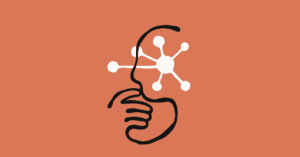The method for grinding steel ball bearings has remained unchanged since approximately 1900, yet manufacturers have progressively automated the surrounding processes. Currently, the operation is primarily driven by a conveyor system, with most tasks being automated. The most pressing responsibility for humans is to detect when issues arise—and that could soon be handed over to artificial intelligence as well.
The Schaeffler factory located in Hamburg begins with steel wire that is cut and molded into rough balls. These balls undergo hardening in a series of furnaces and then pass through three progressively precise grinders, ensuring they are spherical to within a tenth of a micron. The end product is one of the most adaptable components in contemporary industry, facilitating low-friction connections in devices ranging from lathes to car engines.
Achieving this level of precision necessitates continuous testing; however, pinpointing defects as they arise can be quite the challenge. While testing may indicate a flaw appearing at a specific point on the assembly line, the underlying cause might remain obscure. It could be that the torque on a screwing tool is incorrect, or that a recently replaced grinding wheel is affecting quality. Identifying the root of the issue involves cross-referencing data from various industrial machines, none of which were originally designed for this purpose.
This task too may soon fall to machines. Last year, Schaeffler was among the first to adopt Microsoft’s Factory Operations Agent, a novel product powered by large language models and tailored specifically for manufacturers. This chatbot-style tool assists in diagnosing the reasons behind defects, downtime, or excessive energy usage. The outcome resembles a ChatGPT for factories, utilizing OpenAI’s models through a partnership with Microsoft’s Azure.
Kathleen Mitford, Microsoft’s corporate vice president for global industry marketing, describes this initiative as “a reasoning agent built atop manufacturing data.” Consequently, Mitford explains, “the agent is adept at understanding inquiries and accurately translating them against standardized data models.” For instance, a factory worker might pose a question such as, “What is causing an unusually high level of defects?” and the model would respond with data sourced from across the manufacturing process.
The agent is intricately linked to Microsoft’s existing enterprise solutions, particularly Microsoft Fabric, its data analytics system. This integration allows Schaeffler, which operates hundreds of plants using Microsoft’s system, to train its agent on data from a global scale.
Stefan Soutschek, Schaeffler’s vice president overseeing IT, emphasizes that the true power of the system lies in its data analysis capabilities. “The primary advantage is not the chatbot itself, although it is helpful,” he states. “It’s the synergy of this OT [operational technology] data platform in the backend, along with the chatbot that relies on that data.”
Despite its designation, this is not agentic AI: It lacks goals, and its abilities are confined to responding to inquiries posed by the user. You can configure the agent to perform basic commands through Microsoft’s Copilot studio, but the objective is not for the agent to make independent decisions. Essentially, this is AI serving as a data access tool.










